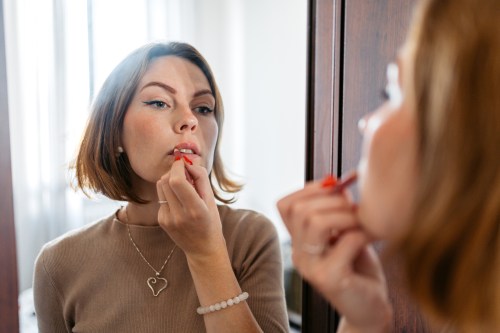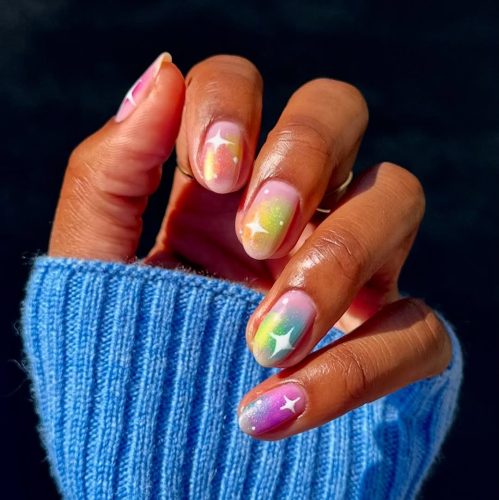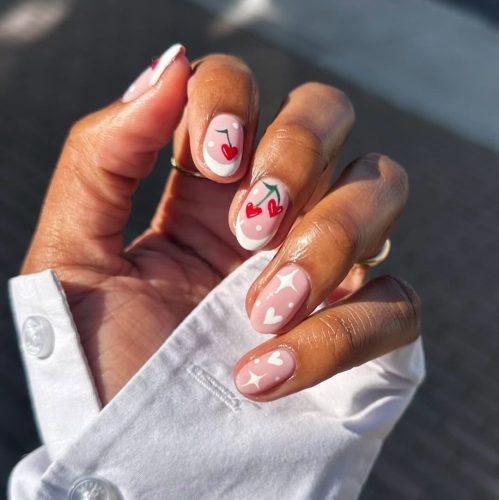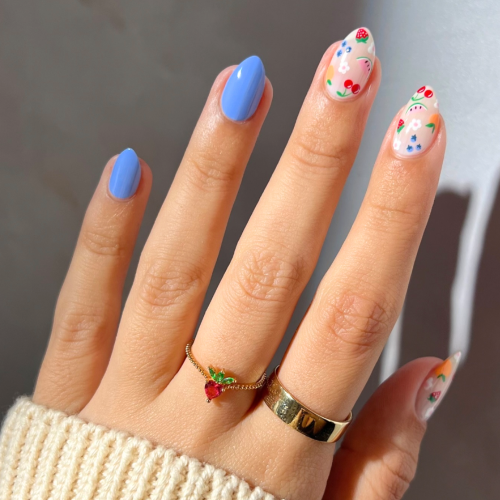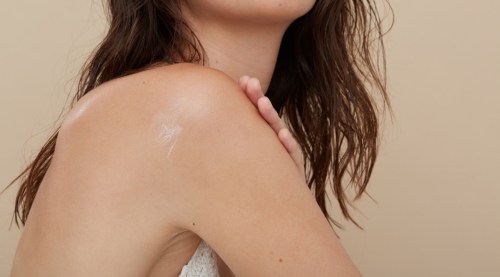Our editors independently select these products. Making a purchase through our links may earn Well+Good a commission
Should you be using a crystal deodorant?
Everything you need to know about the Crystal deodorant stone, from its high-fashion roots to whether it's really as safe and effective as everyone claims.
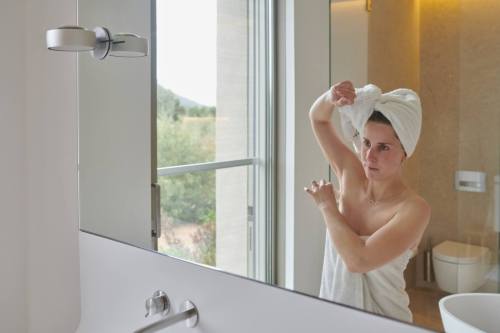
It’s hard to remember a time when you couldn’t find paraben-free skin care at the drugstore and 10-free nail polish at the neighborhood salon. But back in the early ‘80s, before the term “natural” was everywhere, there was one pioneering company with the foresight to bring it out of dusty health-food stores and into the high-gloss fashion world: the makers of the Crystal deodorant stone.
Yes, I’m talking about the same brand that you can now score for less than a ten-spot on Amazon. Back in the day, its inaugural product was considered a total luxury item—a hunk of French-sourced mineral salt that looked like an actual crystal and effectively deodorized without added chemicals.
Though it’s maintained a cult following among natural beauty die-hards for over 30 years, the rock’s finding itself in the spotlight once again.
And though it’s maintained a cult following among natural beauty die-hards for over 30 years, the rock’s finding itself in the spotlight once again, thanks to an ever-growing contingent of clean cosmetics crusaders. (The high-vibe gemstone craze may also have something to do with it—I mean, who wouldn’t want to have something that looks like a block of clear quartz as part of their bathroom #shelfie?)
Clearly, the Crystal deodorant stone is finally having its mass moment—but is the healthy cred justified? And seriously, how exactly does a “crystal” keep your stink in check?
Here’s what you need to know about the Crystal deodorant stone.
The natural deodorant with fashion-world roots
Crystal’s origin story dates way back to 1984, when founder Jerry Rosenblatt was importing French fashion accessories to pay his way through law school. “I became aware of a factory in France that was producing large blocks of natural mineral salt for water purification—and [learned] they could also be used to combat the bacteria that causes body odor,” says the San Francisco-based entrepreneur. By wetting the Crystal deodorant stone and smoothing it under the arm, an invisible salt film sits on the surface of the skin. It doesn’t stop you from sweating, but it does keep scent-forming microbes at bay.
Sensing an opportunity, Rosenblatt asked the factory if they could make palm-sized chunks of the salt—potassium alum—for him to merchandise in the US. Once they arrived stateside, he then employed people with disabilities through Easter Seals to sand, polish, and package them. “They looked like a natural rock you’d find in your backyard,” he says.
Henri Bendel jumped at the opportunity to launch this curious new product, setting a price point of $18.
Henri Bendel jumped at the opportunity to launch this curious new product, placing an ad in The New York Times and setting a price point of $18. (With inflation, that’d be about $40 today.) The New York City luxury department store’s entire inventory sold out within 24 hours of running the ad—and within a year, Le Crystal Naturel deodorant (the name it used to go by) was in just about every high-end shop from coast to coast.
“Bullocks Wilshire in Los Angeles gave me an entire window display for the rock, and I. Magnin in San Francisco loved the product so much that they had a pile of [deodorants] on every single cosmetics counter,” Rosenblatt recalls. “Hardly anyone thought about ‘natural’ back then, but it was just so unique. My Bullocks Wilshire buyer used to keep the product on the coffee table in his living room—he loved to hear the comments from the guests when they’d come to his house.”
The Crystal deodorant stone goes mass
Crystal continued to ride the high-fashion wave until around 1988. Rosenblatt says that’s when most department stores eliminated their beauty accessory departments, where the deodorant was sold, in favor of single-brand cosmetics counters. He then had to quickly retool the rock for a mass-market debut, shortening its name to Crystal.
“To put the product on the shelf, I had to change the design to something that looked more like deodorant,” he says. The first iteration, which still exists today, was potassium alum shaped and placed in a container, just like a deodorant stick. “At the time, this was all being done by hand—guys in the factory were sitting on the floor with hammers as they chiseled away at these rock shapes,” Rosenblatt says.
“At the time, this was all being done by hand—guys in the factory chiseled away at these rock shapes.”
Over the years, new versions followed—a liquid roll-on, a spray, a line scented with essential oils, and a men’s offshoot developed with the help of the nose from Axe body spray—all of which continue to use mineral salts as their key odor-fighting ingredient. (The rock’s not sold in most stores these days, but you can still get it online.)
Also noteworthy: In the ensuing years, other brands have followed suit. (Naturally Fresh has a roll-on option, while Thai Deodorant Stone offers up a stick, for example). In other words, Crystal is no longer the only rock in the game.

Is Crystal still considered safer than regular deodorant?
Though the Crystal deodorant stone is famously free of aluminum chloride and aluminum chlorohydrate—synthetic chemicals that have been linked to breast cancer—its key ingredient does contain naturally-occurring aluminum that could potentially penetrate the skin when mixed with water. (Same goes for the other stone deodorant brands.) No studies have directly proven the element in its organic state to be harmful, but it’s still caused some controversy among natural-beauty devotees.
Its key ingredient does contain naturally-occurring aluminum that could potentially penetrate the skin when mixed with water.
Even so, Crystal meets Whole Foods’ exacting standards according to Steven Benoit, the grocery brand’s global Whole Body buyer. “We ban [100-plus] ingredients from our Whole Body department,” he says. “While we carry a variety of effective natural deodorants, Crystal has been a long-time customer favorite as a dependable deodorant with clean, simple ingredients.”
Wellness influencers dig it, too. “I gave up using antiperspirants 10 years ago because of the aluminum and other scaries in there, so I love that Crystal is clean and actually works,” says Tove Lo’s nutrition guru, Courtney Swan.
Add in the fact that it’s a fraction of the price of newer natural deodorants, and it’s clear why this ‘80s phenomenon’s outlasted shoulder pads and perms.
For more clean beauty intel, check out the 3 products in your makeup bag you should swap out first and the ultra-gentle, drugstore baby aisle products you should buy for yourself.
Originally published on June 8, 2017. Updated on September 16, 2019.
Sign Up for Our Daily Newsletter
Get all the latest in wellness, trends, food, fitness, beauty, and more delivered right to your inbox.
Got it, you've been added to our email list.
